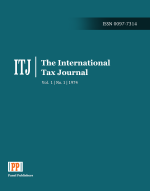Cross ventilation as a passive strategy for the comfort of a social housing complex in Ceibos Renacer in Manta
Keywords:
passive strategies, climate, application, thermal comfort, social housingAbstract
The impact of climate change and the importance of sustainability strategies in the design of social housing in urban environments were addressed, with a specific focus on the city of Manta. The use of quantitative and qualitative research was taken into account as a methodology, with the objective of analyzing local climatic conditions and their influence on the thermal comfort of a single-family home. Tools such as Climate Consultant 6.0 software and Andrew Marsh 3D Sun-Path were used to evaluate climate parameters and design passive solutions. The results highlighted the need for natural ventilation, sun protection and the use of vegetation to improve livability and reduce energy consumption. The result was the proposal of various bioclimatic strategies to optimize thermal comfort and promote more sustainable development in the region.
Downloads
References
Carta Climática de Manta. (2021). Obtenido de https://climate.onebuilding.org/WMO_Region_3_South_America/ECU_Ecuador/index.html
CEPAL. (2023). Estudio económico de américa Latina y el Caribe 2023. Naciones Unidas. Obtenido de https://repositorio.cepal.org/server/api/core/bitstreams/1f15f6f6-df99-409b-bfa1-b8f34a72d918/content
Climate Data. (2024). Obtenido de https://es.climate-data.org/
Ecuador, C. d. (2008). Quito: Tribunal Constitucional del Ecuador. Registro oficial Nro, 449. Obtenido de https://www.gob.ec/sites/default/files/regulations/2020-06/CONSTITUCION%202008.pdf
Ernst, T. (2002). Manual de diseño para viviendas con climatización pasiva. Alemania: Forschungslabor für Experimentelles Bauen FEB. Obtenido de https://d1wqtxts1xzle7.cloudfront.net/52801244/01_Manual_diseno_pasivo_2006-libre.pdf?1493089294=&response-content-disposition=inline%3B+filename%3DErnst_Muller_Manual_de_diseno_para_vivie.pdf&Expires=1719773037&Signature=Z1veUhXCH5X5Kq0e2guGNYjNr1LTHZNS1
Gamble, J., Ebi, K., Grambsch, A., Sussman, F., & Wilbanks, T. (2009). Analyses of the Effects of Global Change on Human Health and Welfare and Human Systems (SAP 4.6). Washington DC,Estados Unidos: Environmental Protection Agency. Obtenido de https://cfpub.epa.gov/ncea/risk/recordisplay.cfm?deid=197244
Guillén, V. (2014). Metodología de evaluación de confort térmico exterior para diferentes pisos climáticos en Ecuador. Madrid, España: Congreso Nacional del Medio Ambiente. Obtenido de www_conama2014_org_1_METODOLOGIA_DE_EVAL.pdf
Rojas, M., Fernandez, L., Zambrano, L., & Paredes, A. (2022). Análisis de la vivienda rural utilizando el confort térmico como medida de habitabilidad. Facultad de Arquitectura Artes y Diseño. Universidad Indoamérica. Ambato-Ecuador. Ciencia América. Obtenido de https://cienciamerica.edu.ec/index.php/uti/article/view/399/873
Software Climate Consultan. (s.f.). Obtenido de https://www.sbse.org/resources/climate-consultant
World Meteorological Organization. (2021). Climate and Weather in Ecuador. Obtenido de https://wmo.int/publication-series/state-of-global-climate-2021
Downloads
Published
How to Cite
Issue
Section
License
Copyright (c) 2024 The international tax journal

This work is licensed under a Creative Commons Attribution-NonCommercial-NoDerivatives 4.0 International License.








